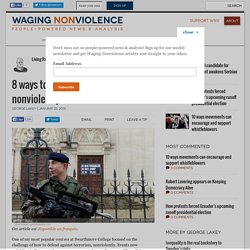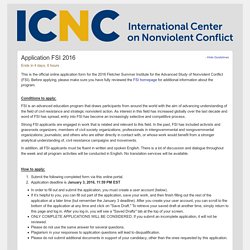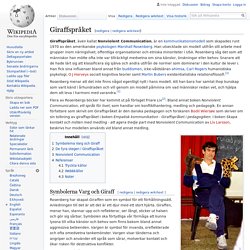

8 ways to defend against terror nonviolently. Cet article est disponible en français.

One of my most popular courses at Swarthmore College focused on the challenge of how to defend against terrorism, nonviolently. Events now unfolding in France make our course more relevant than ever. (The syllabus was published in “Peace, Justice, and Security Studies: A Curriculum Guide” in 2009.) In fact, the international post-9/11 “war against terror” has been accompanied by increased actual threats of terror almost everywhere. In the first place, who knew that non-military techniques have, in actual historical cases, reduced the threat of terror? I gathered for the students eight non-military techniques that have worked for some country or other.
Each student chose a country somewhere in the world that is presently threatened by terrorism and, taking the role of a consultant to that country, devised from our nonviolent toolbox a strategy for defense. It was tough work, and highly stimulating. What are the eight techniques? 1. 2. 3. 4. 5. 6. 7. International Center on Nonviolent Conflict Submission Manager - Application FSI 2016. This is the official online application form for the 2016 Fletcher Summer Institute for the Advanced Study of Nonviolent Conflict (FSI).

Before applying, please make sure you have fully reviewed the FSI homepage for additional information about the program. Conditions to apply: FSI is an advanced education program that draws participants from around the world with the aim of advancing understanding of the field of civil resistance and strategic nonviolent action. As interest in this field has increased globally over the last decade and word of FSI has spread, entry into FSI has become an increasingly selective and competitive process. Strong FSI applicants are engaged in work that is related and relevant to this field.
In addition, all FSI applicants must be fluent in written and spoken English. NVC på jobbet, den nya normen? - Friareliv. NATURALIZING NVC. Hem - Friareliv. Nonviolent Communication with Marshall Rosenberg - a Brief Introduction. Culture of Peace in school with NVC - Film 1 of 5 - Behind every action there is a need. Culture of Peace in school with NVC - Film 2 of 5 - From conflict to connection, the four elements. Culture of Peace in school with NVC - Film 3 of 5 - Taking responsibility for my own feelings. Culture of Peace in school with NVC - Film 4 of 5 - Empathy for others, understanding others.
Culture of Peace in school with NVC - Film 5 of 5 - From anger to empathy, Mona and Mohammed. Vulnerable honesty. NVC based children Mediation. Conflict hotline workplace friction. Baynvc. Nonviolent Communication - San Francisco Workshop - Marshall Rosenberg - CNVC.org. Giraffspråket. Giraffspråket, även kallat Nonviolent Communication, är en kommunikationsmodell som skapades runt 1970 av den amerikanske psykologen Marshall Rosenberg.

Han utvecklade sin modell utifrån sitt arbete med grupper inom näringslivet, offentliga organisationer och etniska minoriteter i USA. Rosenberg såg det som att människor han mötte ofta inte var tillräckligt medvetna om sina känslor, önskningar eller behov. Snarare att de hade lärt sig att klassificera sig själva och andra utifrån de normer som dominerar i den kultur de lever i. Han fick sina influenser bland annat från buddismen, icke-våldsläran ahimsa, Carl Rogers humanistiska psykologi, O J Harveys socialt kognitiva teorier samt Martin Bubers existentialistiska relationsfilosofi.[1] Rosenberg menar att det inte finns något egentligt nytt i hans modell. Flera av Rosenbergs böcker har kommit ut på förlaget Friare Liv[2]. Symbolerna Varg och Giraff[redigera | redigera wikitext] Vargantagande är Några grundantaganden i Giraffspråket. Marshall B. Rosenberg - How do you talk to yourself about making mistakes. Marshall Rosenberg: Depression.
Marshall Rosenberg - The Difference between Feelings and Thoughts (Audio) Nonviolent Communication - Words Are Windows Or They're Walls - CNVC.org. Nonviolent Communication Training Course Marshall Rosenberg CNVC org. FULL - Nonviolent Communication Workshop - Marshall Rosenberg (2000) (Multi Subtitles) Nonviolent Communication Part 1 Marshall Rosenberg. Nonviolent Communication Part 2 Marshall Rosenberg. Nonviolent Communication Part 1 Marshall Rosenberg. The Center for Nonviolent Communication. The Center for Nonviolent Communication. How to mediate between two families at war? Check out this...